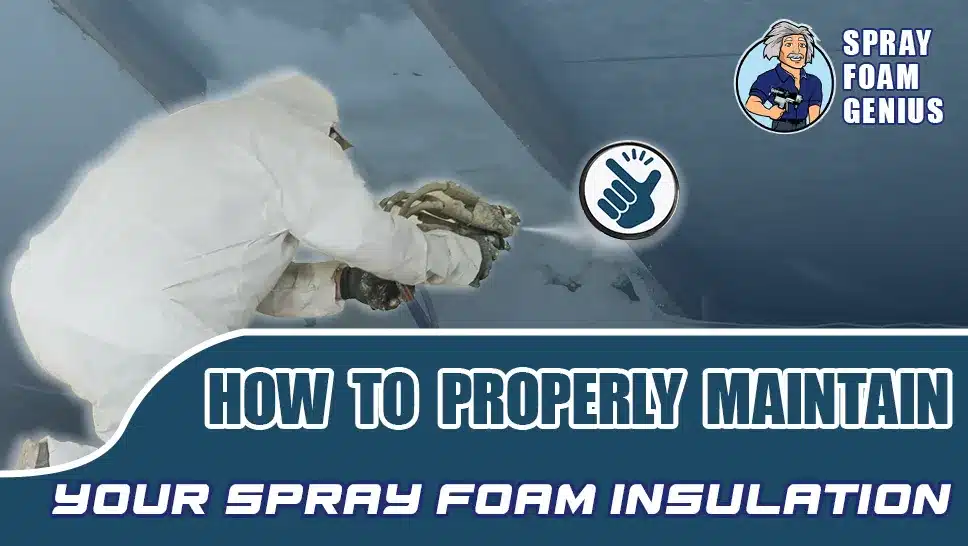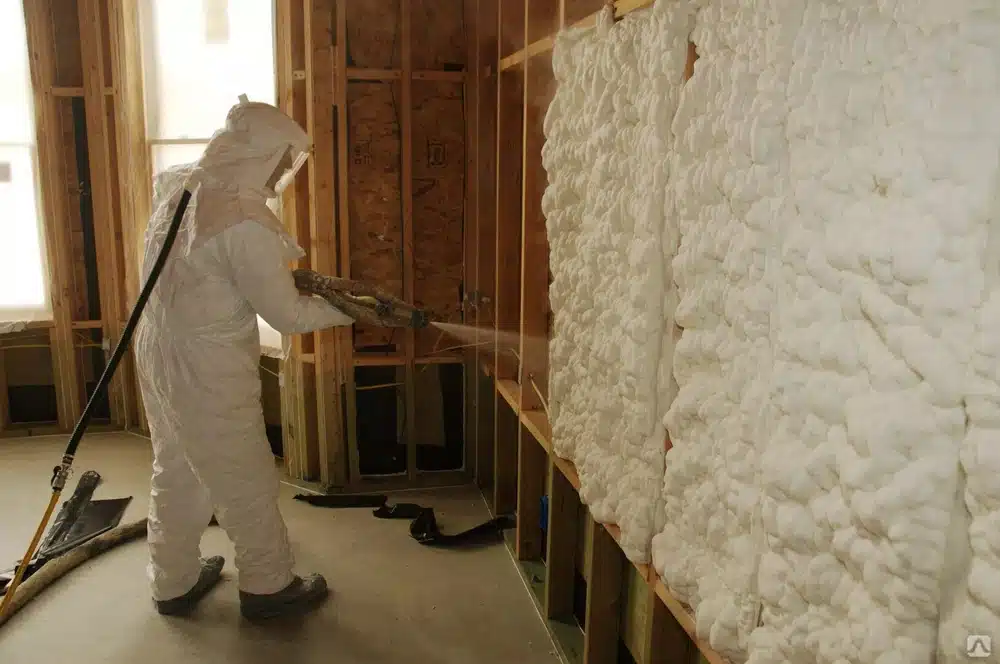
Maintaining spray foam insulation is crucial for ensuring that your home remains energy-efficient and comfortable. Spray Foam Genius Marketing is dedicated to helping homeowners and contractors keep their spray foam insulation in optimal condition. This comprehensive guide will walk you through the essential steps for maintaining spray foam insulation, addressing common issues, and ensuring the longevity and effectiveness of your insulation.
What is Spray Foam Insulation?
Spray foam insulation is a type of polyurethane foam applied in a liquid state, which expands and solidifies into a dense, insulating material. It is known for its excellent thermal resistance, moisture control, and air-sealing properties. There are two main types of spray foam insulation:
- Open-Cell Foam: This type has a softer, more flexible structure and provides good soundproofing. It is often used in interior spaces where flexibility and sound absorption are desired.
- Closed-Cell Foam: Denser and more rigid, closed-cell foam offers higher insulation values and moisture resistance. It is typically used in exterior applications and areas exposed to high humidity or moisture.
Proper maintenance of spray foam insulation is critical for several reasons:
- Energy Efficiency: Well-maintained insulation helps reduce heating and cooling costs by preventing air leaks and ensuring effective thermal resistance.
- Comfort: Proper insulation maintenance contributes to a more stable indoor temperature, reducing drafts and improving overall comfort.
- Longevity: Regular maintenance extends the lifespan of your insulation, preventing premature deterioration and costly replacements.
- Health: Addressing moisture issues and maintaining proper ventilation helps prevent mold growth and ensures good indoor air quality.
Key Maintenance Tips for Spray Foam Insulation
1. Regular Inspections
Importance of Routine Inspections
Routine inspections are vital for identifying and addressing potential issues before they escalate. Regular checks help maintain the integrity and performance of your spray foam insulation.
How to Inspect Your Insulation
- Visual Inspection: Periodically examine the areas where spray foam insulation is applied. Look for signs of damage such as cracks, peeling, or discoloration. Pay particular attention to high-risk areas such as windows, doors, and vents.
- Physical Inspection: Gently press on the insulation to check for softness or sagging. The insulation should be firm and uniformly applied. Any irregularities may indicate a problem that requires attention.
2. Addressing Moisture Issues
Impact of Moisture on Insulation
Moisture can significantly affect the performance of spray foam insulation. It can lead to reduced insulating properties, mold growth, and potential structural damage.
Preventing and Managing Moisture
- Inspect for Leaks: Regularly check your home for leaks in the roof, walls, and plumbing systems. Repair any leaks promptly to prevent water from coming into contact with the insulation.
- Ventilation: Ensure proper ventilation in areas prone to high humidity, such as basements and attics. Use dehumidifiers if necessary to control moisture levels and prevent condensation.
- Repair Water Damage: If you find water damage near insulation areas, address the issue immediately. Dry out the affected area and replace or repair any damaged insulation to prevent further problems.
3. Maintaining Proper Ventilation
Role of Ventilation in Insulation Maintenance
Proper ventilation is essential for maintaining indoor air quality and preventing moisture buildup, which can impact spray foam insulation.
Ensuring Effective Ventilation
- Inspect Ventilation Systems: Regularly check that your HVAC system, vents, and exhaust fans are functioning correctly. Ensure that airflows are not obstructed and that filters are clean.
- Adjust HVAC Settings: Make necessary adjustments to your HVAC system to ensure optimal airflow throughout your home. Proper ventilation helps maintain balanced indoor humidity levels and prevents moisture-related issues.
4. Preventing Physical Damage
Protecting Insulation from Physical Damage
Physical damage to spray foam insulation can reduce its effectiveness and lead to costly repairs. Avoiding damage and protecting the insulation is essential for maintaining its performance.
How to Prevent Damage
- Handle with Care: When performing home improvements or repairs, avoid drilling, nailing, or cutting into areas with spray foam insulation without first checking for hidden foam.
- Use Protective Barriers: If insulation is exposed, consider installing protective coverings or barriers to prevent accidental damage during construction or renovation projects.
5. Cleaning and Maintenance
Routine Cleaning Practices
Regular cleaning helps maintain the appearance and functionality of spray foam insulation. Proper cleaning techniques ensure that insulation remains effective and free from debris.
Cleaning Spray Foam Insulation
- Dust and Debris: Remove dust and debris from insulation surfaces using a soft brush or vacuum cleaner with a brush attachment. Avoid using harsh chemicals or abrasive materials, as these can damage the foam.
- Spot Cleaning: For stains or spills, use a mild detergent and water solution. Test any cleaning solution on a small, inconspicuous area first to ensure it does not adversely affect the foam.
6. Professional Inspections and Repairs
When to Seek Professional Help
While regular DIY inspections and maintenance are important, some issues may require professional expertise. Professional contractors can provide thorough inspections and address complex problems.
Benefits of Professional Services
- Expert Evaluation: Professional insulation contractors can identify hidden issues that may not be apparent during routine inspections. They can provide expert recommendations and repairs to ensure your insulation remains in optimal condition.
- Annual Checkups: Scheduling annual checkups with a professional helps maintain the performance of your insulation and address any potential issues before they become major problems.
Benefits of Proper Spray Foam Insulation Maintenance

1. Enhanced Energy Efficiency
Maintaining your spray foam insulation ensures that it continues to provide effective thermal resistance. This helps reduce energy consumption and lowers heating and cooling costs. By preventing air leaks and maintaining optimal insulation performance, you can achieve significant savings on your energy bills.
2. Improved Indoor Comfort
Proper maintenance contributes to a more comfortable living environment. Well-maintained insulation helps regulate indoor temperatures, reducing drafts and ensuring a consistent and pleasant indoor climate throughout the year.
3. Prolonged Insulation Lifespan
Regular maintenance extends the lifespan of your spray foam insulation. By addressing issues early and keeping the insulation in good condition, you can avoid premature replacement and associated costs. Proper care helps ensure that your insulation performs effectively for many years.
4. Healthier Indoor Environment
Effective insulation maintenance helps prevent mold growth and ensures good indoor air quality. By managing moisture issues and maintaining proper ventilation, you can reduce the risk of health problems related to poor indoor air quality.
Keep Your Insulation in Top Shape
Maintaining your spray foam insulation is essential for ensuring energy efficiency, comfort, and longevity. If you have any questions or need professional assistance with your insulation, don’t hesitate to reach out to us. At Spray Foam Genius Marketing, we specialize in providing top-notch services for spray foam insulation contractors, and we’re here to help.
Contact Us Today:
- Phone: 877-840-FOAM for USA and 844-741-FOAM for Canada
- Website: https://sprayfoamgeniusmarketing.com/
- Email: [email protected]
- How to Use Pinterest to Market Your Spray Foam Insulation Services - December 27, 2023
- How to Use LinkedIn to Grow Your Spray Foam Insulation Business - December 23, 2023
- How to Use Instagram to Showcase Your Spray Foam Insulation Projects - December 16, 2023

